Mad Hedge Biotech and Healthcare Letter
December 19, 2024
Fiat Lux
Featured Trade:
(SURVIVAL OF THE SOLVENT)
(KOD), (GOSS), (BLUE), (SIOX), (CDAK), (GLPG)

Mad Hedge Biotech and Healthcare Letter
December 19, 2024
Fiat Lux
Featured Trade:
(SURVIVAL OF THE SOLVENT)
(KOD), (GOSS), (BLUE), (SIOX), (CDAK), (GLPG)

The biotech industry likes to measure success in breakthroughs, but 2024 taught us to count it in survivors.
Sure, we saw remarkable wins in schizophrenia and obesity treatments - enough to keep Big Pharma writing checks that would make anyone pause.
But those layoff numbers? They keep climbing, and I've seen enough market cycles to know what that means.
Yes, the Nasdaq Biotechnology Index eked out a 5.4% gain in 2023, but don’t let that calm surface fool you.
Beneath it, some companies were taking on water faster than a paper boat in a tsunami. It’s not exactly the environment to make your local biotech cheerleader grin ear to ear.
Still, there is value in understanding what went wrong.
Take Kodiak Sciences (KOD) - and I mean that literally because the market sure did. They watched their high hopes for an age-related macular degeneration treatment encounter the brick wall of trial results that proved no better than existing standards of care.
The market’s reaction was swift and merciless, erasing more than 70% of Kodiak’s valuation. Back in my hedge fund days, we called this kind of drop a "character-building event."
Then there's Gossamer Bio (GOSS), which missed its endpoints in pulmonary arterial hypertension so badly you'd think they were aiming for a different disease altogether.
They learned the hard way that lofty ambitions can deflate at high altitudes when critical endpoints fail to materialize, leaving the company staring at a gaping hole where investor confidence used to be.
Bluebird Bio (BLUE)? They've been playing regulatory red light green light with their gene therapy platform.
Despite having the science that could make this possible, they struggled to justify the hefty R&D spending necessary to bring complex and costly treatments to a market that can turn stingy when results arrive late and uncertain.
Speaking of tough breaks, Sio Gene Therapies (SIOX) discovered the cruel reality that neurodegenerative pipelines rarely behave the way spreadsheets say they should.
And poor Codiak BioSciences (CDAK) - their exosome therapy platform imploded so spectacularly that they were forced to declare bankruptcy.
Even Galapagos NV (GLPG) found itself stuck reassessing once-promising late-stage candidates. Those strategic alliances they bragged about last year aren't looking quite so strategic anymore, either.
It would be easy to pin the blame on management missteps or scientific overreach, but the numbers are showing something else.
FDA’s Center for Drug Evaluation and Research did not exactly smile on the biotech crowd’s ambitions. In 2022, it approved 37 novel drugs. By December 2023, fewer than 30 had made the cut.
Want more sobering statistics? The probability of a drug making it from Phase I to FDA approval sits at 7.9%. In immuno-oncology alone, we've got over 1,500 active trials fighting for attention. Overcrowding would be an understatement.
Meanwhile, global biopharmaceutical R&D spending topped $200 billion in 2022 - that's a lot of investor cash burning through labs with no guarantee of return.
Remember the IPO party from a few years back? Well, 2023 saw fewer than 20 biotech IPOs brave the public markets. That's not caution - that's fear.
For those still interested in this sector - and I know you're out there - some of these disasters might offer lessons, or even opportunities.
The iShares Biotechnology ETF exists for those who prefer to spread their risk. Smart move, considering what we've seen this year.
Let's talk specific names. Bluebird Bio might still have a chance if they can get their regulatory act together and convince insurers to cover their therapies.
Sio Gene Therapies could find new partners - though I wouldn't hold my breath. Galapagos has Gilead (GILD) in their corner, which counts for something in this market.
So here's my take: hold Kodiak if you can stomach more volatility - they've already taken their biggest hits.
Same goes for Bluebird Bio, but only if you've got patience. Galapagos? Keep it, but watch those pipeline updates like a hawk.
Gossamer Bio? Time to consider an exit. Sio Gene Therapies lacks catalysts, and Codiak - well, bankruptcy speaks for itself.
The lesson from Kodiak, Gossamer, Bluebird, Sio, Codiak, and Galapagos is simple: brilliant science means nothing without solid analysis, realistic timelines, and serious cash. 2024 proved that point six times over.
Sure, everyone in biotech wants to change the world. The hard part? Staying solvent long enough to make it happen.
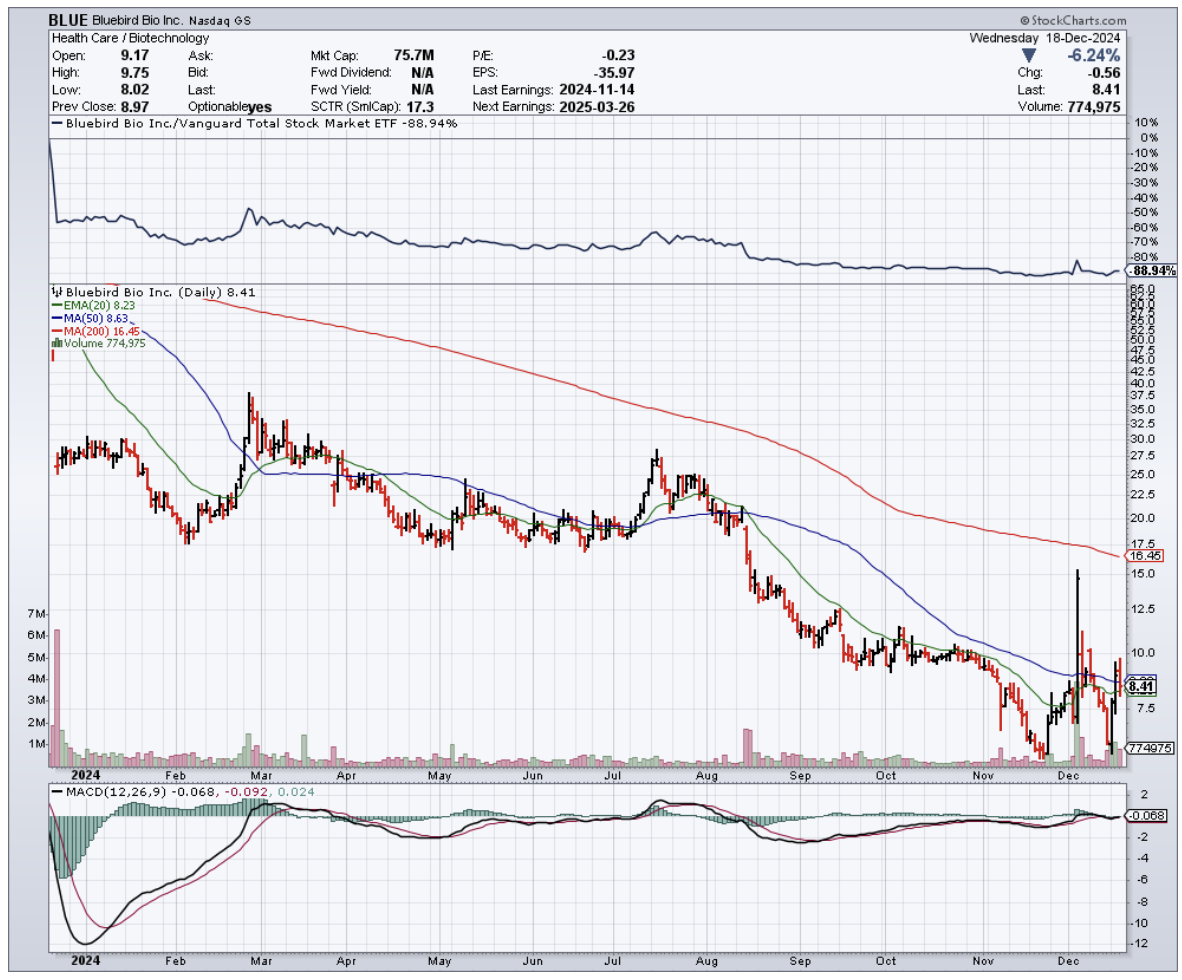
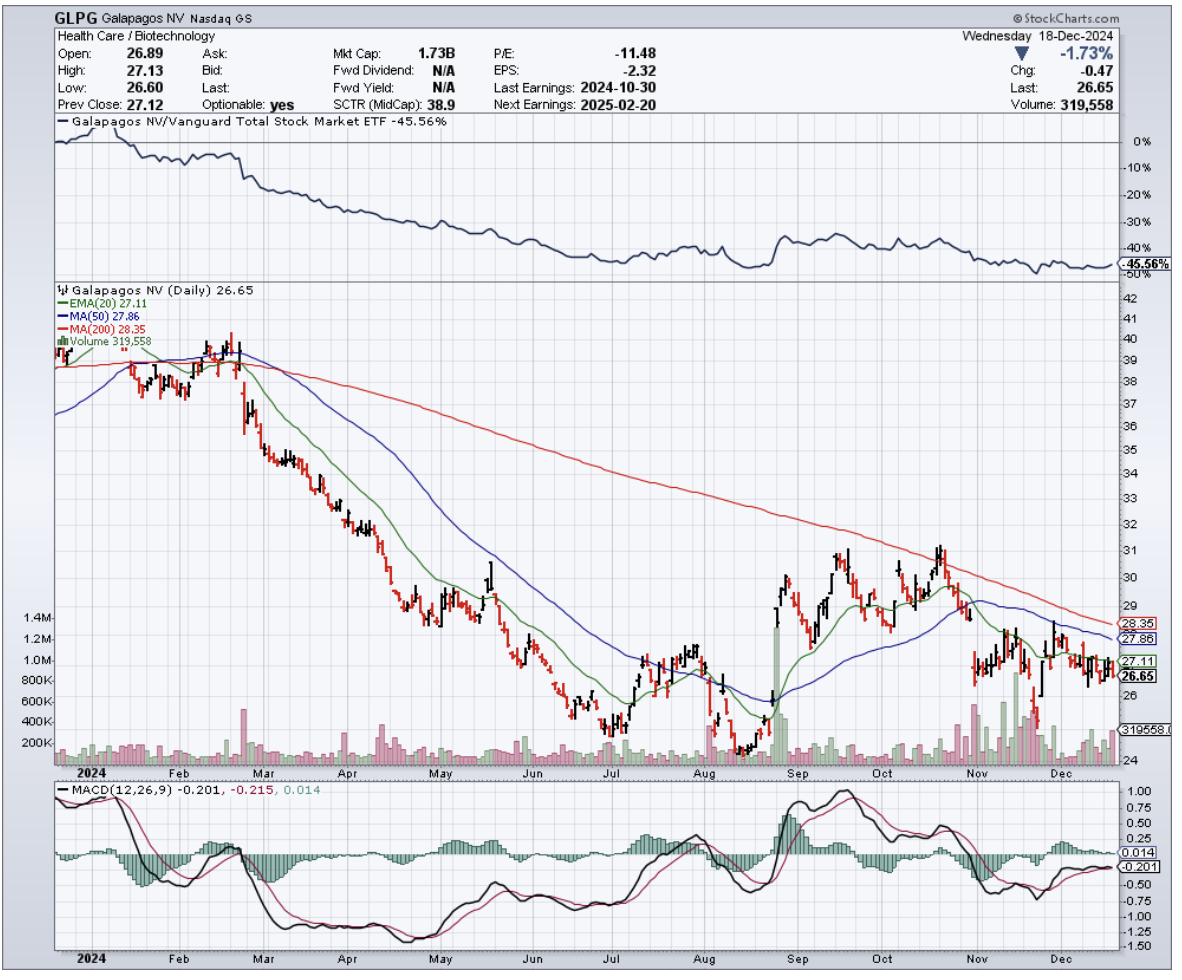
Mad Hedge Biotech and Healthcare Letter
February 23, 2023
Fiat Lux
Featured Trade:
(BATTLE FOR GENE THERAPY SUPREMACY)
(CRSP), (NVS), (BIIB), (BLUE), (VYGR), (GBIO), (SIOX), (NTLA), (EDIT), (VRTX), (PRIME), (BEAM)

Gene therapy is arguably one of the most fascinating and revolutionary fields in the healthcare and biotechnology industry.
A significant reason for the excitement behind gene therapy is that it provides the possibility of “functional cures,” such as “one-and-done treatments,” for patients. It’s also why these therapies are some of the most costly on the market.
For example, Zolgensma from Novartis (NVS), which focuses on treating spinal muscular atrophy in infants, has a whopping $2 million-plus price tag. Despite that, it’s considered the best option.
For context, its counterpart, Spinraza from Biogen (BIIB), costs roughly $750,000 in the first year of treatment. Unlike Zolgensma, Spinraza needs to be administered four times each year. After the first treatment, patients would need to pay $350,000 per annum. By the fifth year, Spinraza has surpassed the treatment cost of Zolgensma.
Despite its incredible potential, gene therapy is one of the riskiest bets.
Take Bluebird Bio (BLUE) into consideration. This biotech has won not only one but two regulatory approvals for its innovative gene therapies. One is for Skysona, which targets a rare cerebral condition called adrenoleukodystrophy; the other, Zynteglo, is for the blood disorder beta-thalassemia. Unfortunately, this biotech’s price has slid by more than 90% in the past five years.
Working on gene therapies is filled with complicated and challenging obstacles. Most companies in this segment ended up burning through their cash without successfully launching a marketable product. Some examples of these are Voyager Therapeutics (VYGR), Generation Bio (GBIO), and Sio Gene Therapies (SIOX).
However, there is a field in the gene therapy world that has substantially rewarded investors: CRISPR gene editing.
CRISPR means Clustered, Regularly Interspaced Short Palindromic Repeats, which was discovered by Jenifer Doudna and Emannualle Charpentier. Their discovery won the Nobel Prize for Chemistry in 2020.
Basically, CRISPR is utilized by bacteria to recognize genetic sequences that belong to dangerous or harmful viruses and cleave them via specialized enzymes like CAS-9. Eventually, Doudna and Charpentier discovered that the system could be modified to target and remove, destroy, or even edit damaging genetic sequences in human beings.
This discovery gave birth to many biotech companies. Intellia Therapeutics (NTLA) was the brainchild of Doudna, while Charpentier co-founded CRISPR Therapeutics (CRSP).
Over the past five years, NTLA's share price has risen by 146% while CRISPR skyrocketed by 210%. In comparison, the S&P 500 recorded a 53% gain within the same timeframe.
Given the volatility of the field and market volatility, other CRISPR-centered companies failed to replicate this success.
The share price of Editas Medicine (EDIT) fell by 55% over the past five years. Caribou Biosciences (CRBU) also failed to ride the momentum and slid by 44%.
Still, there are positive updates amid the struggles of the sector.
The latest news is from CRISPR Therapeutics, which expects several catalysts in 2023 thanks to its promising pipeline of candidates and clinical trials. So far, one of the most anticipated catalysts is its biologics license application for its sickle cell disease candidate, which the company aims to file by March 2023.
CRISPR Therapeutics developed this candidate, called exa-cel, alongside Vertex Pharmaceuticals (VRTX). It would be the first-ever Crispr-based therapy to edit or rewrite faulty genes if approved. Based on the company’s data, patients who underwent this one-time treatment have continued to be free of sickle cell disease symptoms.
Every year, 100,000 patients in the US are reported to suffer from sickle cell disease. Many companies have offered treatments for this condition for years but no cure. Hence, CRISPR and Vertex’s one-and-done therapy has received a fast-tracked designation. Consequently, this would give the developers sought-after market exclusivity.
As anticipated, CRISPR Therapeutics’ competitors are hot on its heels with sickle cell disease treatments of their own. To date, Prime Medicine (PRME), Beam Therapeutics (BEAM), Editas, and Intellia have candidates queued for clinical trials.
Overall, the gene editing sector continues to be an exciting and interesting field. Investors looking to take part of the action in this segment should consider buying and holding CRISPR Therapeutics stock for at least five years because the company has a reasonable chance of becoming the most dominant name in the business soon.
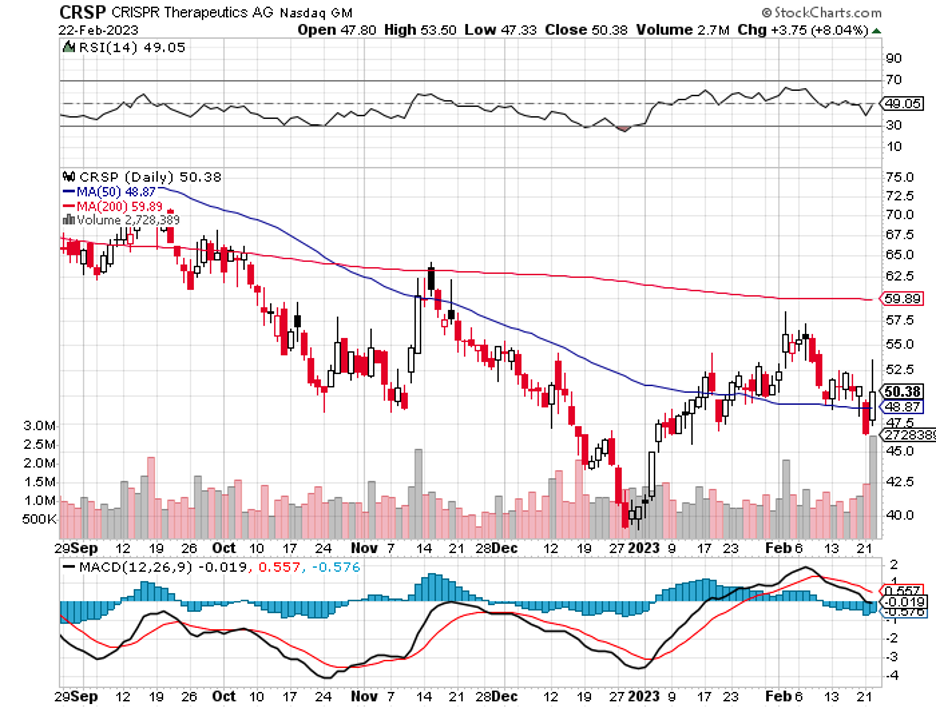
Mad Hedge Biotech & Healthcare Letter
July 22, 2021
Fiat Lux
FEATURED TRADE:
(ANOTHER STEP CLOSER TO NEURO-VICTORY)
(BAYRY), (BIIB), (LLY), (SIOX), (RHHBY), (ABBV), (MRK), (PFE), (AZN)

First, Alzheimer’s. Now, Parkinson’s.
Companies working on neurodegenerative diseases are on a roll.
After Biogen’s (BIIB) work with Aduhelm, another biopharmaceutical company has made notable progress: Bayer (BAYRY).
Merely six weeks after DA01 landed in the clinic, Bayer’s Parkinson’s disease drug candidate is getting into the fast lane.
This marks one of the major pipeline candidates that the German company picked up from its $1 billion acquisition of Versant Ventures in 2019.
DA01 is described as a “pluripotent stem cell-derived dopaminergic neuron therapy.”
In layman’s terms, Bayer collects donor cells that have the ability to develop into any other cell type in the body.
It will then engineer these versatile cells to turn into neurons that have the capacity to produce the neurotransmitter dopamine—aka the chemical your nervous system uses to transmit messages to nerve cells.
Those engineered neurons will then be transplanted into a part of the brain, called the putamen, which is in charge of our movements and learning.
What we know so far is that the next phase of the trial will determine the safety and tolerability of the cell transplantation a year following the procedure.
This will also tell us more about the cell survival rate after the transplant and the motor effects a year or two following the procedure.
Like Biogen’s Alzheimer’s candidate, the fast-track designation with the FDA could open doors for a speedy review or even an accelerated approval for Bayer’s DA01.
Aside from transplanting engineered cells into patients’ brains, the company is also looking into other options for Parkinson’s.
In October 2020, it shelled out $2 billion upfront to acquire Asklepios BioPharmaceutical or AskBio for its gene therapy research on Parkinson’s.
Roughly 1 million people in the US are suffering from Parkinson’s disease—a number that’s greater than the combined number of patients diagnosed with Lou Gehrig’s disease, multiple sclerosis, and muscular dystrophy.
What’s worse is that this is expected to climb to 1.2 million by 2030.
In terms of treatment cost, the combined expenses for Parkinson’s, including medical bills and lost income, are estimated to reach about $52 billion annually in the US alone.
The medications alone already amount to an average of $2,500 per year, with therapeutic surgery reaching up to $100,000 per person.
This is why it comes as no surprise that several companies have been working towards figuring out a more potent treatment or even cure for Parkinson’s.
One of the frontrunners is Prevail Therapeutics, a New York-based biotechnology company that’s focused on developing a gene therapy for this disease.
Following a successful Series B financing round in 2019, in which it secured $50 million in investments, the company eventually attracted the attention of big pharma.
By December 2020, it was acquired by Eli Lilly (LLY) for $880 million with the promise to help the smaller biotech company develop three of its most promising Parkinson’s candidates.
Another Parkinson’s-centered biotech company is Axovant Gene Therapies, which has been working on a single-dose treatment for neurodegenerative disease.
Its pipeline proved to be promising, as seen in its $74.7 million public offering just last February 2020, with the company maintaining its solid footing amid the pandemic.
By November, it rebranded itself as Sio Gene Therapies (SIOX).
Outside the US is Irish biotech firm Inflazome, which is working on a unique treatment for Parkinson’s.
Unlike the other candidates, the goal of Inflazome’s drug is to directly deliver the treatment to the affected neurons. That is, it plans to pass through the blood-brain barrier.
Its research attracted the Michael J. Fox Foundation, which granted it $1 million in funding, in March 2019.
Since then, the company’s progress has attracted the attention of other major biopharmaceutical companies with Roche (RHHBY), ultimately landing the acquisition in September 2020.
Of course, talks about neurodegenerative diseases wouldn’t be complete without Biogen.
On top of its Alzheimer’s work, the Massachusetts biotechnology giant has been collaborating with San Francisco-based Parkinson’s company Denali Therapeutics.
The two have been working on the development of three small molecular drugs for $560 million in upfront payments plus $465 million in equity investment into the smaller biotech.
In addition to these, we’re still waiting on what the rest of the major biopharmaceutical companies would come up with in the future.
Given that the likes of AbbVie (ABBV), Merck (MRK), Pfizer (PFE), and AstraZeneca (AZN) have all signed up publicly via the Critical Path for Parkinson's (CPP) consortium to tackle this debilitating disease, it’s safe to say that there’s hope for the future of this sector.
First, Alzheimer’s. Now, Parkinson’s.
Companies working on neurodegenerative diseases are on a roll.
After Biogen’s (BIIB) work with Aduhelm, another biopharmaceutical company has made notable progress: Bayer (BAYRY).
Merely six weeks after DA01 landed in the clinic, Bayer’s Parkinson’s disease drug candidate is getting into the fast lane.
This marks one of the major pipeline candidates that the German company picked up from its $1 billion acquisition of Versant Ventures in 2019.
DA01 is described as a “pluripotent stem cell-derived dopaminergic neuron therapy.”
In layman’s terms, Bayer collects donor cells that have the ability to develop into any other cell type in the body.
It will then engineer these versatile cells to turn into neurons that have the capacity to produce the neurotransmitter dopamine—aka the chemical your nervous system uses to transmit messages to nerve cells.
Those engineered neurons will then be transplanted into a part of the brain, called the putamen, which is in charge of our movements and learning.
What we know so far is that the next phase of the trial will determine the safety and tolerability of the cell transplantation a year following the procedure.
This will also tell us more about the cell survival rate after the transplant and the motor effects a year or two following the procedure.
Like Biogen’s Alzheimer’s candidate, the fast-track designation with the FDA could open doors for a speedy review or even an accelerated approval for Bayer’s DA01.
Aside from transplanting engineered cells into patients’ brains, the company is also looking into other options for Parkinson’s.
In October 2020, it shelled out $2 billion upfront to acquire Asklepios BioPharmaceutical or AskBio for its gene therapy research on Parkinson’s.
Roughly 1 million people in the US are suffering from Parkinson’s disease—a number that’s greater than the combined number of patients diagnosed with Lou Gehrig’s disease, multiple sclerosis, and muscular dystrophy.
What’s worse is that this is expected to climb to 1.2 million by 2030.
In terms of treatment cost, the combined expenses for Parkinson’s, including medical bills and lost income, are estimated to reach about $52 billion annually in the US alone.
The medications alone already amount to an average of $2,500 per year, with therapeutic surgery reaching up to $100,000 per person.
This is why it comes as no surprise that several companies have been working towards figuring out a more potent treatment or even cure for Parkinson’s.
One of the frontrunners is Prevail Therapeutics, a New York-based biotechnology company that’s focused on developing a gene therapy for this disease.
Following a successful Series B financing round in 2019, in which it secured $50 million in investments, the company eventually attracted the attention of big pharma.
By December 2020, it was acquired by Eli Lilly (LLY) for $880 million with the promise to help the smaller biotech company develop three of its most promising Parkinson’s candidates.
Another Parkinson’s-centered biotech company is Axovant Gene Therapies, which has been working on a single-dose treatment for neurodegenerative disease.
Its pipeline proved to be promising, as seen in its $74.7 million public offering just last February 2020, with the company maintaining its solid footing amid the pandemic.
By November, it rebranded itself as Sio Gene Therapies (SIOX).
Outside the US is Irish biotech firm Inflazome, which is working on a unique treatment for Parkinson’s.
Unlike the other candidates, the goal of Inflazome’s drug is to directly deliver the treatment to the affected neurons. That is, it plans to pass through the blood-brain barrier.
Its research attracted the Michael J. Fox Foundation, which granted it $1 million in funding, in March 2019.
Since then, the company’s progress has attracted the attention of other major biopharmaceutical companies with Roche (RHHBY), ultimately landing the acquisition in September 2020.
Of course, talks about neurodegenerative diseases wouldn’t be complete without Biogen.
On top of its Alzheimer’s work, the Massachusetts biotechnology giant has been collaborating with San Francisco-based Parkinson’s company Denali Therapeutics.
The two have been working on the development of three small molecular drugs for $560 million in upfront payments plus $465 million in equity investment into the smaller biotech.
In addition to these, we’re still waiting on what the rest of the major biopharmaceutical companies would come up with in the future.
Given that the likes of AbbVie (ABBV), Merck (MRK), Pfizer (PFE), and AstraZeneca (AZN) have all signed up publicly via the Critical Path for Parkinson's (CPP) consortium to tackle this debilitating disease, it’s safe to say that there’s hope for the future of this sector.
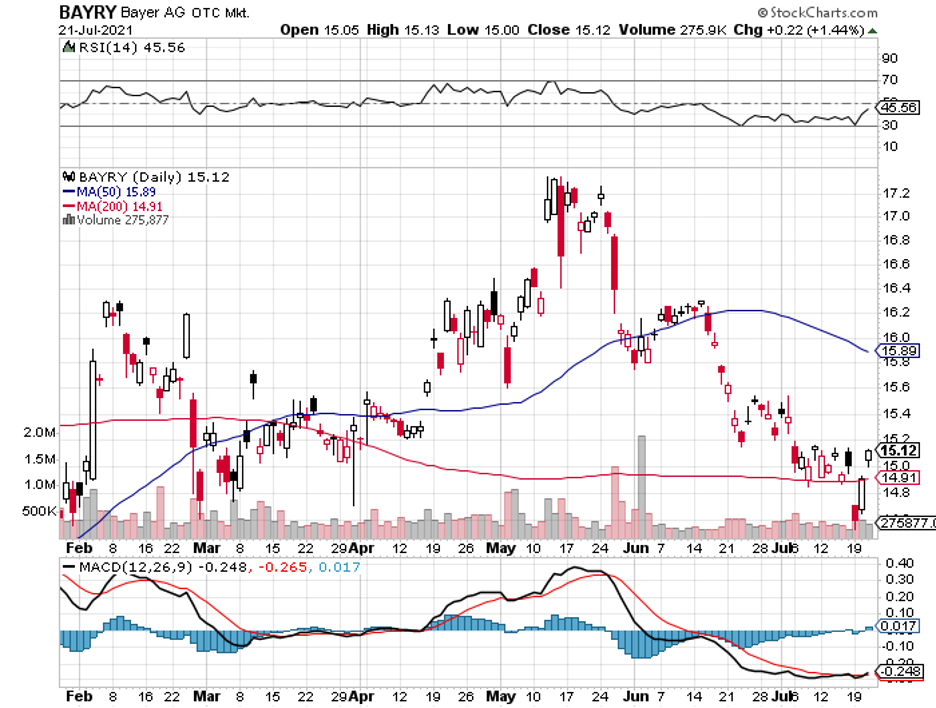
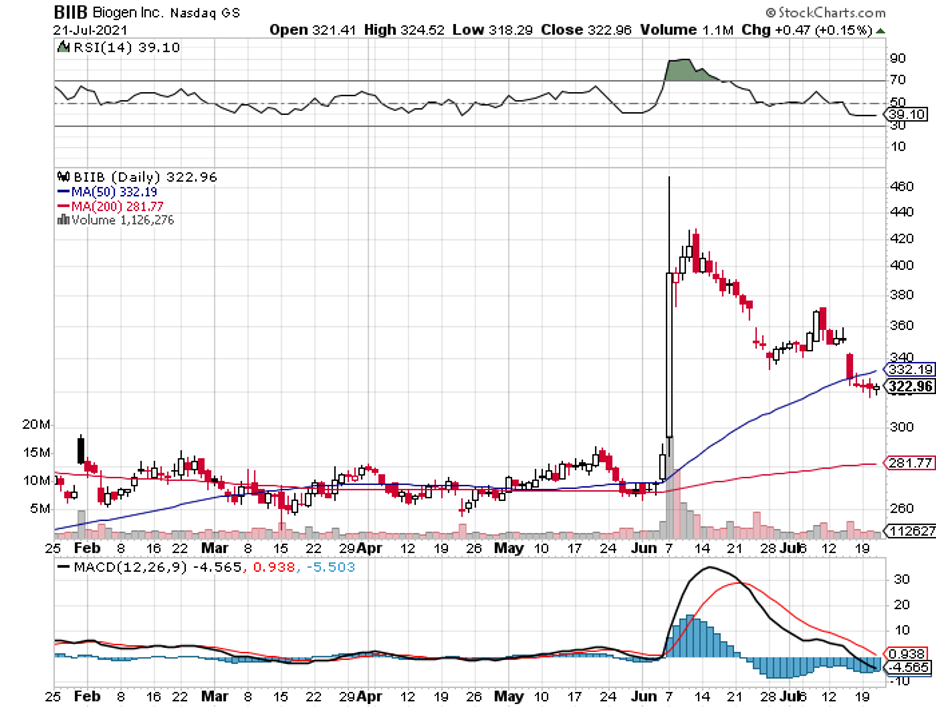
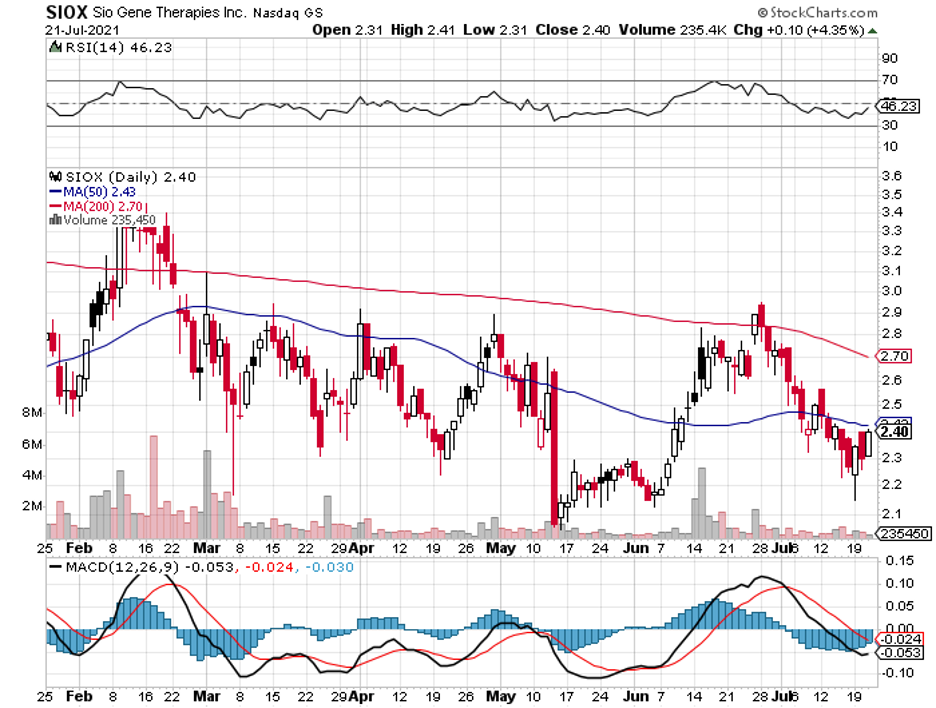
Legal Disclaimer
There is a very high degree of risk involved in trading. Past results are not indicative of future returns. MadHedgeFundTrader.com and all individuals affiliated with this site assume no responsibilities for your trading and investment results. The indicators, strategies, columns, articles and all other features are for educational purposes only and should not be construed as investment advice. Information for futures trading observations are obtained from sources believed to be reliable, but we do not warrant its completeness or accuracy, or warrant any results from the use of the information. Your use of the trading observations is entirely at your own risk and it is your sole responsibility to evaluate the accuracy, completeness and usefulness of the information. You must assess the risk of any trade with your broker and make your own independent decisions regarding any securities mentioned herein. Affiliates of MadHedgeFundTrader.com may have a position or effect transactions in the securities described herein (or options thereon) and/or otherwise employ trading strategies that may be consistent or inconsistent with the provided strategies.
This site uses cookies. By continuing to browse the site, you are agreeing to our use of cookies.
OKLearn moreWe may request cookies to be set on your device. We use cookies to let us know when you visit our websites, how you interact with us, to enrich your user experience, and to customize your relationship with our website.
Click on the different category headings to find out more. You can also change some of your preferences. Note that blocking some types of cookies may impact your experience on our websites and the services we are able to offer.
These cookies are strictly necessary to provide you with services available through our website and to use some of its features.
Because these cookies are strictly necessary to deliver the website, refuseing them will have impact how our site functions. You always can block or delete cookies by changing your browser settings and force blocking all cookies on this website. But this will always prompt you to accept/refuse cookies when revisiting our site.
We fully respect if you want to refuse cookies but to avoid asking you again and again kindly allow us to store a cookie for that. You are free to opt out any time or opt in for other cookies to get a better experience. If you refuse cookies we will remove all set cookies in our domain.
We provide you with a list of stored cookies on your computer in our domain so you can check what we stored. Due to security reasons we are not able to show or modify cookies from other domains. You can check these in your browser security settings.
These cookies collect information that is used either in aggregate form to help us understand how our website is being used or how effective our marketing campaigns are, or to help us customize our website and application for you in order to enhance your experience.
If you do not want that we track your visist to our site you can disable tracking in your browser here:
We also use different external services like Google Webfonts, Google Maps, and external Video providers. Since these providers may collect personal data like your IP address we allow you to block them here. Please be aware that this might heavily reduce the functionality and appearance of our site. Changes will take effect once you reload the page.
Google Webfont Settings:
Google Map Settings:
Vimeo and Youtube video embeds:
